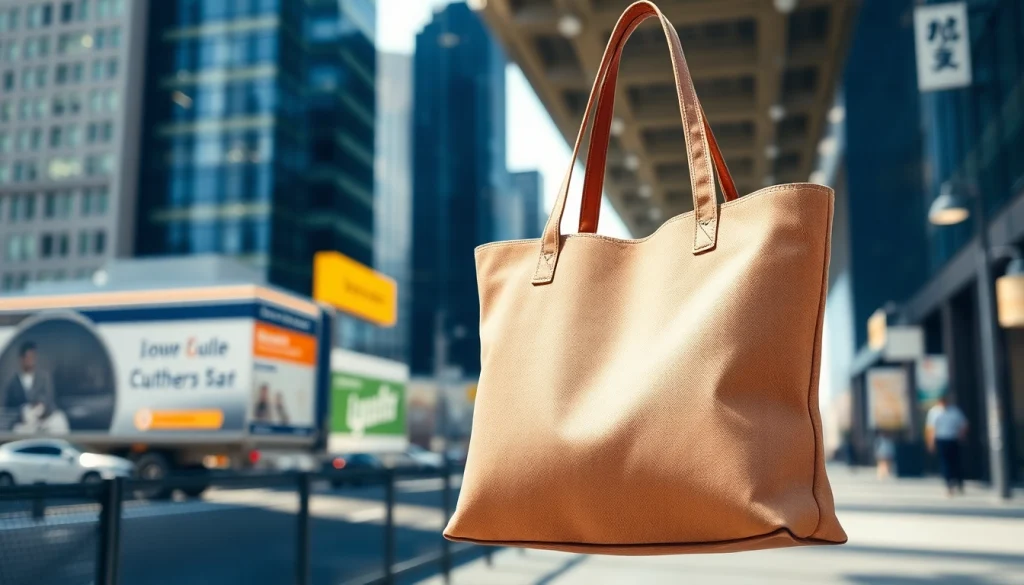The Evolution of the Tote bag
Over the years, the Tote bag has evolved significantly, transitioning from a simple utility item to a versatile fashion staple. This evolution reflects broader trends in fashion, lifestyle, and consumer behavior, marking the
From Utility to Fashion Statement
Initially designed for carrying everything from groceries to beach essentials, the
Fashion designers started to experiment with fabrics, colors, and designs, transforming the traditionally plain
Materials used in Tote bag Manufacturing
The material of a
- Canvas: Durable and washable, canvas is perfect for everyday use.
- Leather: Offers a luxurious feel and longevity, often becoming more attractive with age.
- Polyester and Nylon: Lightweight yet durable, these synthetic fabrics are water-resistant and easy to clean.
- Eco-friendly options: Many manufacturers are now producing tote bags made from recycled materials, appealing to environmentally conscious consumers.
Historical Significance and Usage
Tote bags have historical roots that trace back to the early 17th century when they were used primarily for carrying goods. Their simplistic design was practical, allowing individuals to easily transport items. In the late 20th century, the
Choosing the Right Tote bag for Every Occasion
With various styles, materials, and features available, selecting the right
Functional Features to Consider
When selecting a
- Size: Depending on your needs, choose a bag that accommodates essentials without being overly bulky.
- Pockets: Internal and external pockets can help organize items, making it easier to find what you need quickly.
- Closure Type: Open or zippered tops can influence security and ease of access. A secure closure can be crucial for those carrying valuables.
- Strap Length: Longer straps can be more convenient for wearing over the shoulder, while shorter straps may work better for handheld carrying.
Top Styles for Different Needs
Different occasions and needs warrant different styles of
- Casual Everyday Carry: A canvas or lightweight fabric tote is perfect for daily errands or a trip to the gym.
- Work or School: A larger tote with compartments helps carry laptops, notebooks, and other essentials efficiently.
- Beach or Travel: Opt for water-resistant materials with ample space for towels, sunscreen, and other beach necessities.
- Designer Fashion Tote: Consider high-end fabrics or unique designs for events where you want to make a statement.
Color and Material Preferences
Personal preferences for colors and materials can significantly impact your experience with a
Tote bag Care and Maintenance
To ensure your
Cleaning Practices for Longevity
The cleaning method varies by the material of the
- Canvas: Spot clean stains with mild soap and water. For deeper cleaning, machine wash if the care label permits.
- Leather: Wipe with a damp cloth and use a leather conditioner periodically to maintain suppleness.
- Polyester/Nylon: These materials can typically be machine washed on a gentle cycle, but check the care label for specific instructions.
Storage Tips to Preserve Shape
Storing your
- Store bags in a cool, dry place away from direct sunlight to prevent fading.
- Consider using a dust bag for high-end totes to protect from dust and dirt.
- If the bag has a structured design, consider filling it with tissue paper to maintain shape during storage.
Repairing Minor Damage to Your Tote bag
Even with care, minor damages can occur. Here are some common repairs you can DIY:
- Frayed Edges: Use fabric glue or a sewing kit to secure frayed edges and prevent further damage.
- Small Tears: Patch small tears using iron-on patches compatible with the bag’s material.
- Strap Repairs: If a strap starts to wear, reinforce it with additional fabric or seek professional help for more serious damage.
How to Style Your Tote bag
Styling your
Pairing with Various Outfits
The versatility of the
- Causal Daywear: Pair a canvas
with jeans and a simple t-shirt for a laid-back look. - Work Attire: Opt for a sophisticated leather tote that complements business attire, such as tailored pants or a midi skirt.
- Weekend Outfits: Pair with a flowy dress and sandals for a relaxed weekend look, ideal for brunch or casual outings.
Accessorizing for a Complete Look
Accessories can enhance the overall aesthetic and function of your
- Scarves: Tying a scarf around the handle of your tote can add color and richness to your overall outfit.
- Jewelry: Statement earrings or necklaces can elevate your look and draw attention to your
. - Sunglasses: A stylish pair of sunglasses can enhance your style and complement your tote, especially in sunny weather.
Seasonal Trends in Tote bag Fashion
Staying in tune with seasonal trends can help your
- Spring: Embrace pastel colors and floral prints for a light, airy look.
- Summer: Look for vibrant hues and beach-friendly materials like canvas or straw.
- Fall: Rich colors such as burgundy or forest green can evoke a warm, cozy feel.
- Winter: Opt for darker tones and luxe materials like leather to withstand colder temperatures.
Where to Buy Quality Tote bags
Knowing where to source a quality
Online Retailers to Explore
The digital marketplace offers a vast array of
Local Boutiques with Unique Selections
Local boutiques often curate unique and stylish offerings that differ from mass-produced options. Visiting a boutique allows you to see and feel the bag before purchasing, ensuring it suits your preferences.
Evaluating Quality and Price Points
When considering quality and price, examine the following:
- Material: Higher quality materials may come with a higher price tag but often result in better durability and aesthetics.
- Stitching: Check for reinforced stitching and sturdy hardware, which are indicators of good craftsmanship.
- Brand Reputation: Established brands might offer warranties or guarantees that can be a testament to their quality.
